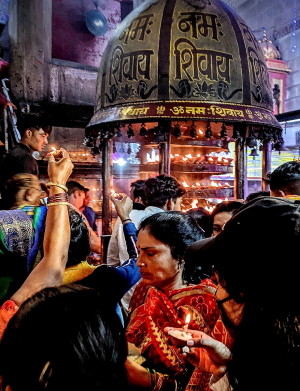
This Orthodox icon of the Last Supper was painted by Simon Ushakov in 1685. The image now is in public domain via Wikimedia Commons.
.
MONDAY, MARCH 18: The flavors of shellfish and lagana bread are associated with the start of the Lenten season in Greece. Outside, colorful kites fly above the fields as Orthodox Christians mark Clean Monday.
Western Christians began the Lenten season of reflection that leads toward the celebration of Easter last week with Ash Wednesday.
The centuries-old tradition of observing Lent as a season of reflection and self-denial is intended to prepare Christians for the greatest festival in their religious calendar: Easter. However, the ever-changing date of Easter—and the method of counting 40 days in Lent—is one of the centuries-old differences among Christians East and West.
There are many differences in Lenten customs between Eastern and Western branches of Christianity—but the call to fast is one of the central spiritual challenges in Eastern churches. Many Western Christian denominations still call on members to “give something up” for Lent. But observant members of Eastern churches often have calendars on the wall—or apps on the smartphones—listing the foods they are giving up. The list becomes quite extensive! Customs vary in each national culture, but the faithful may be abstaining from meat, fish, eggs, dairy products, wine and some oils. This leads to distinctive—and often both healthy and delicious—regional Lenten cuisines.
Another big difference? “Western Christians count Lent’s 40 days as starting with Ash Wednesday but excluding Sundays. Eastern Christians, those generally called Orthodox, start their 40 days on a Monday, counting Sundays, but excluding the week leading up to Easter.” That’s one of the intriguing details in the book, Our Lent: Things We Carry, by Read The Spirit magazine Editor David Crumm. “Some Christians fast; some don’t. Millions of Western Christians retain a custom of limited fasting; millions of Eastern Christians prayerfully make significant sacrifices during this season.”
CLEAN MONDAY IN GREECE
Rather than begin Lent in a solemn manner, Clean Monday is celebrated as a public holiday in Greece and Cyprus: outdoor activities, zany local traditions, kite flying and plenty of Lenten-friendly food is par for the course. As shellfish is permitted in these cultures throughout Lent, a spread of extravagant dishes—based on the bounty of the sea—is common on Clean Monday in Greece.
Customs and traditions vary by locality in Greece on the first day the Lenten season, with colored flour being thrown into crowds in Glaxidi, on the northern coast of the Corinth Gulf; on the Greek island of Chios, a man dresses up as “Aga,” or “Ayas” (the tax collector), then he and his followers grab local villagers to put them into a mock trial. The “criminals” found guilty must suffer punishment or pay a fine that funds the village’s cultural association.
KITES AND CULINARY DELIGHTS
The flying of kites across Greece welcomes spring in a colorful and festive manner, and many traditional kite makers pride themselves on decades of experience. When out and about, picnic baskets are often filled with lagana, an unleavened bread baked only for Clean Monday, and taramosalata, a dip made of salted and cured roe mixed with olive oil, lemon juice and bread crumbs. Feasts of bean soup, shellfish dishes, octopus platters, shrimp dishes and more are carefully prepared for a Clean Monday extravaganza.
In Greece, lagana is usually baked on large sheets and cut into smaller portions for serving. The bread is decorated with sesame seeds, which add a distinct flavor and texture to the bread. Aside from its cultural significance, lagana bread is also delicious and nutritious. It is low in fat and high in fiber, making it an ideal food for people who are observing the Lenten fast. The sesame seeds on top of the bread add a nutty flavor and a satisfying crunch, making it a popular snack for people of all ages.
Interested in baking lagana? Find a recipe at the blog Lemon & Olives, or at The Greek Vegan.







